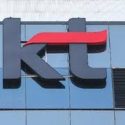Ethereum Entering ‘Phase 2’ After Launch Of Most Complex DApp
During the RISE conference organized in Hong Kong, the largest technology conference in Asia attended by 15,000 attendees, Ethereum co-founder Joseph Lubin noted that the Ethereum blockchain has stepped into phase two of its development, after the launch of the most complex app on its protocol.
During a panel discussion at the conference, Lubin stressed that very soon, the Ethereum blockchain protocol’s main chain will be used as a trust system and layer-two networks will perhaps operate the heavy load of processing large amounts of information.
“[Ethereum is moving] into space where it can serve as the layer one trust system and built into Ethereum we’ll have hundreds of thousands of transactions in the layer two systems and we’re going to see that ramified this year.”
More or less, solutions such as Sharding and Plasma leverage the security of Ethereum’s layer on a protocol to safely process information in a highly efficient manner. Given that Plasma deals as a multi-chain protocol with a network of minor blockchains, while processing small payments as a micropayments channel at the same time, the integration of the two solutions are expected to establish an ecosystem where any decentralized application (dApp) can be installed and operate without facing scalability problems.
Decentralized prediction market platform Augur, which its founder Joey Krug referred to as the most complex decentralized application, has launched on the Ethereum blockchain protocol following years of development.
The launch of Augur on the smart contract protocol of the Ethereum blockchain took a long time compared to other projects presently in existence as a result to the difficulty of installing its prediction market on a decentralized network that depends on smart contracts to store information.
In May, Krug noted:
“Augur’s about 10x more complex than the second most complicated ethereum project, makerdao, which has about 10 contracts vs augur’s 100 [complexity isn’t a good thing, and the augur team has tried to make it as simple as possible, it’s just a really complicated endeavor].”
“Engineering dapps is riskier than engineering underlying blockchains imo. It’s also harder, having been involved with both,” he added. “An underlying chain has no UI, little UX concerns, can fork if it runs into trouble, and doesn’t have to be *easily accessible* in a decentralized way.”
With the layer one blockchain protocol of Ethereum improving in security and layer two solutions offer scalability, complex projects and refined dApps that need sufficient amount of data processing capacity to operate will be able to perform and operate smoothly.





